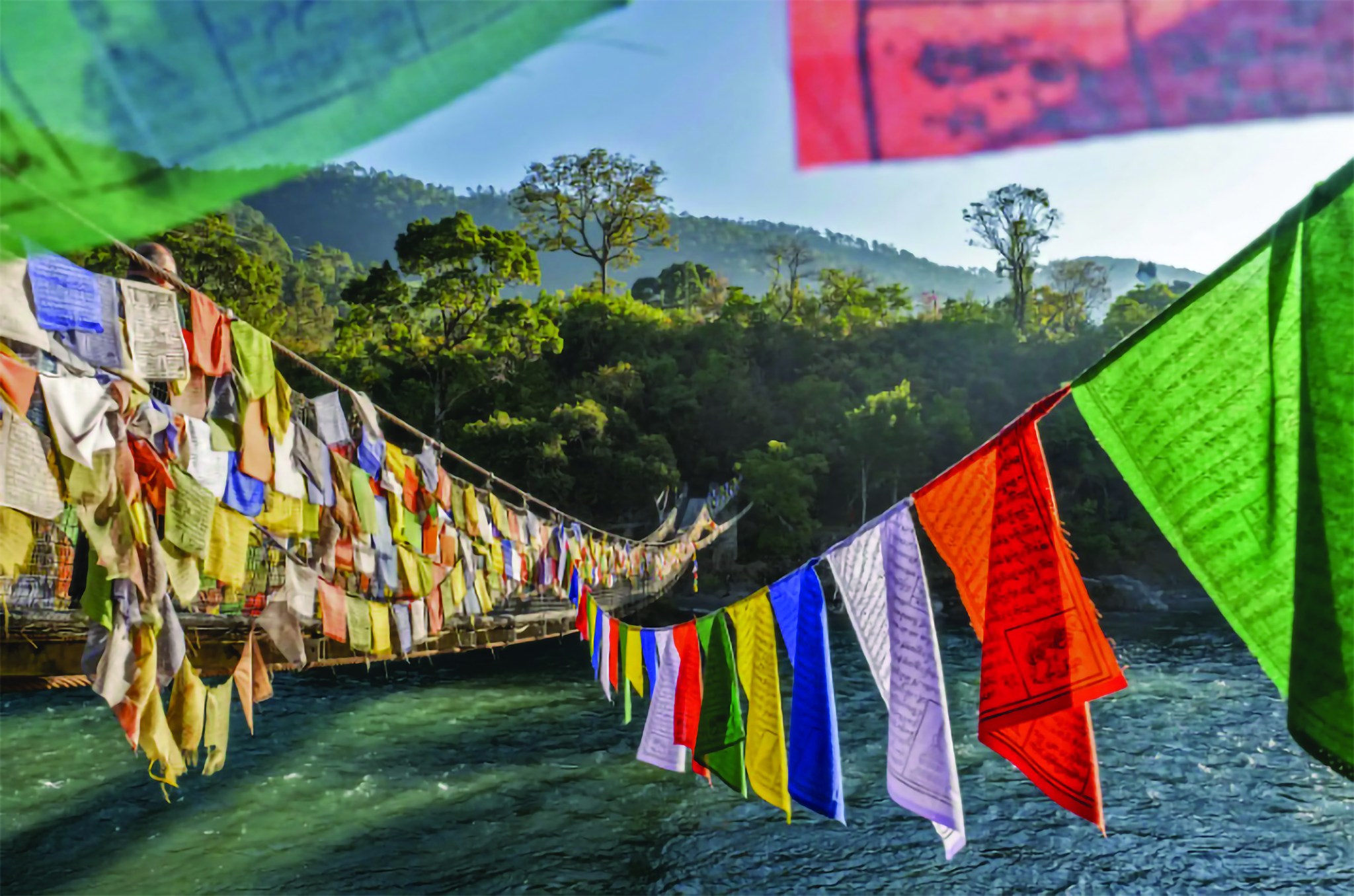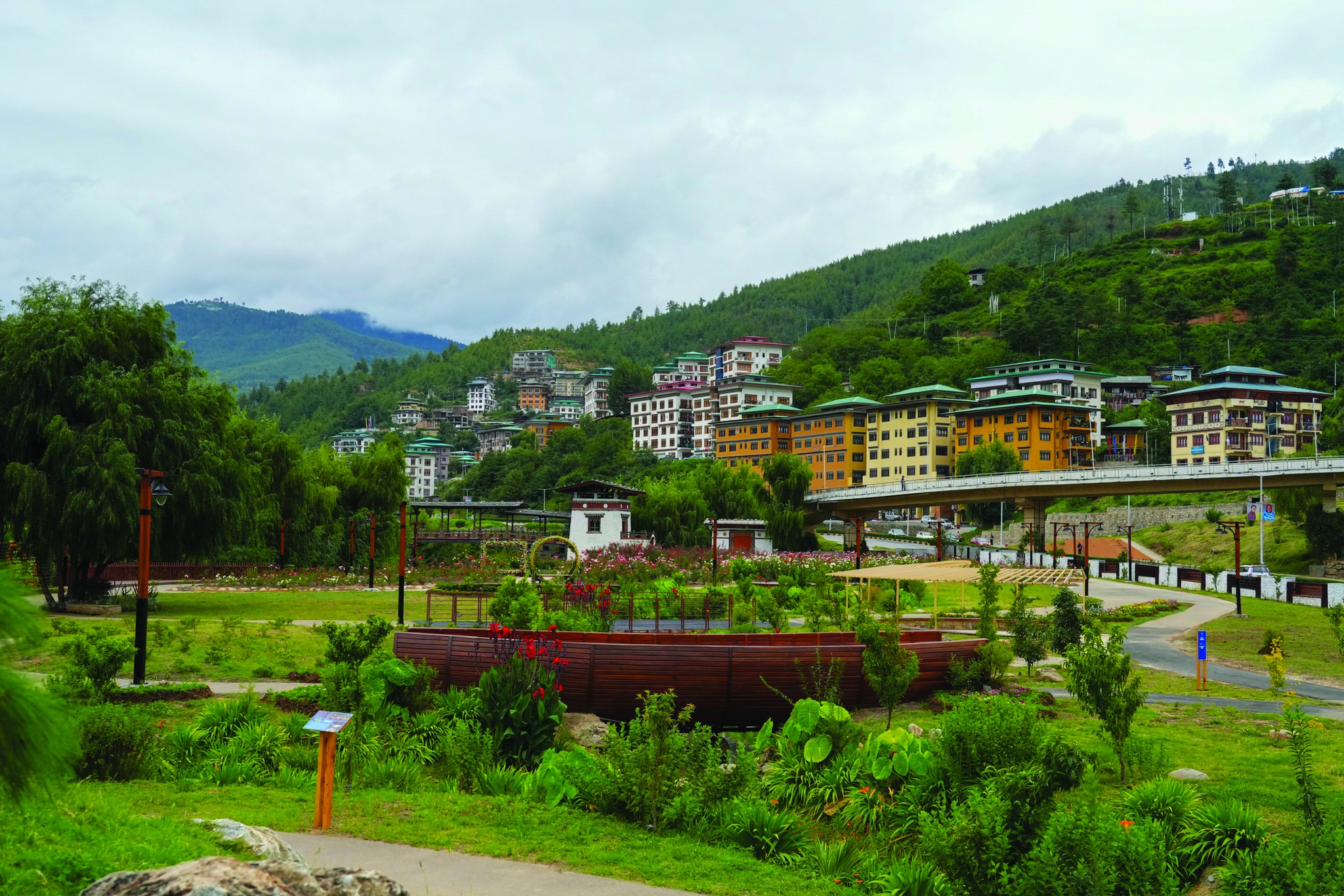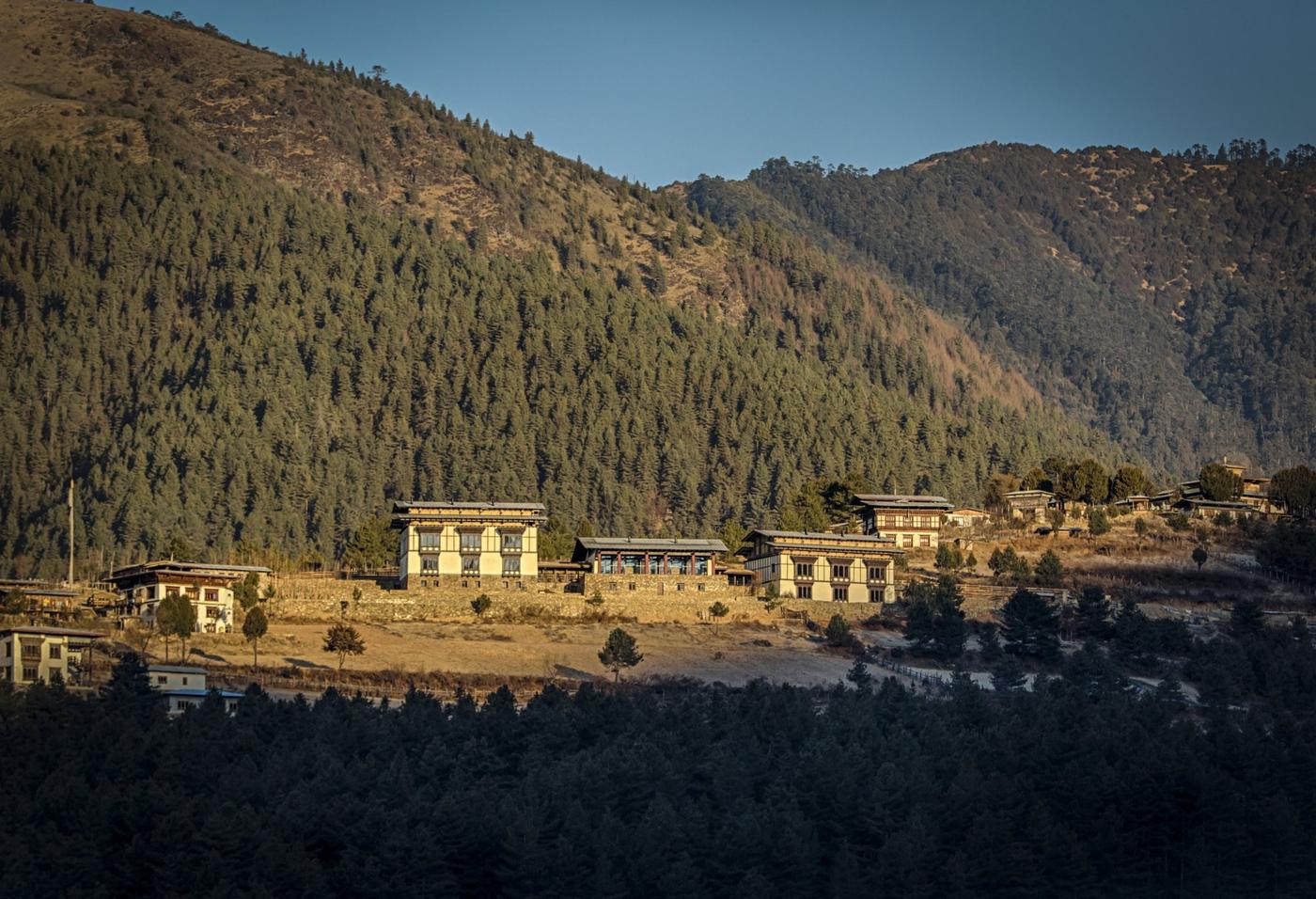Western-Central Bhutan Tour
Home / Western-Central Bhutan Tour
About
Western-Central Bhutan Tour
Discover the unspoiled charm of Western and Central Bhutan on this captivating tour. Beginning in Paro, explore the scenic valleys, quaint villages, and ancient fortresses, including the iconic Tiger’s Nest monastery. Journey to Thimphu, the vibrant capital city, and experience its unique blend of traditional and modern culture. Venture into Central Bhutan, traversing the majestic Black Mountains and visiting the historic sites of Trongsa and Bumthang. With opportunities to interact with locals, witness traditional festivals, and marvel at breathtaking landscapes, this tour offers an unforgettable experience of Bhutan’s natural beauty, rich heritage, and warm hospitality.
- Duration: 10 Nights / 11 Days days
- Destinations Covered: Paro, Thimphu, Punakha, Trongsa, Bumthang
Itinerary
Trip day to day detail itinerary
Arrive Paro. After immigration and customs formalities, you will be received by the representative. Then drive to Thimphu which will take you through Chunzom (confluence of Pachu- the river flowing through Paro valley & Wangchu –the river flowing through Thimphu valley).
On the way, enjoy walking over a suspension bridge to view 15th century iron chain bridge suspended over the Pa chu. This scenic site provides a good place for photography too.
After crossing Chunzom, the drive will take you along the Wangchu upto Thimphu city.
After lunch visit the following:
- The School of Traditional Painting of Arts and Crafts where students undertake a six-year course on the 13 traditional arts and crafts of Bhutan.
- Archery Match -National Sport of Bhutan at Changlimithang National Stadium. Normally you will spot Bhutanese men playing archery game during weekends or public holidays. Good opportunity to interact with local people.
- Centenary Farmers’ Market (open from Wed-Sun only): Most of the Thimphu’s population and many valley dwellers converge on the bustling centenary farmers’ market where farmers from neighboring areas come to sell their farm produces. A visit to the market provides great photo opportunities, as well as the chance to mingle with local people.
- Tashichhoe Dzong which is open to visitors only from 5 pm to 6:30 pm during week days), a fortress of the glorious religion. It was built in 1641 by Zhabdrung Ngawang Namgyal and was reconstructed into present structure by the late King, His majesty Jigme Dorji Wangchuck in the year 1962-1969. It houses the secretariat building, the throne room and the office of the king, and the central monk body.
- The National Memorial Chorten (stupa) which was constructed in 1974 as a memorial for the third King of Bhutan, King Jigme Dorji Wangchuck, who is widely regarded as the father of modern Bhutan. The term ‘chorten’ literally means ' seat of faith' and Buddhists often call such monuments the 'Mind of Buddha'. Meet the elderly generation in circumambulation, especially in the evenings and mornings, at the National Memorial Chorten.
In the evening explore Thimphu town on your own.
Dinner at a restaurant in Thimphu town or at your hotel as per your preference. Overnight at a hotel in Thimphu.
After breakfast drive for about 35 minutes to Dochula Pass (3,088m). In the clear spring sky, you can enjoy the panoramic view of the Himalayan Mountain ranges.
After a refreshment at Dochula Pass Cafeteria, continue your journey to Phobjikha with lunch enroute. The drive will take you through villages of Thinleygang and Lobesa and finally passing through Wangduephodrang district. From here the drive will take you through through conifer and broadleaf forests and through the villages of Nobding Gogona before arriving at Phobjikha valley. Phobjikha valley lies within Jigme Singye Wangchuck National Park (former Black Mountain National park). The park remains one of the largest undisturbed tracks of forest anywhere in the Himalaya’s. The varying altitude and rainfall have created a wide range of climatic conditions, making it home to many species of plants, animals and birds.
On arrival at Phobjikha check into your hotel. After refreshment visit the Black necked crane center. The cranes will start immigrating to this area by mid Novermber and flying back to their summer home in Tibetan Plateau by mid March, so you will be able to spot black necked cranes. From black crane center take short walk through fields and farmhouses where you can have free interaction with local people.
Dinner and overnight at a hotel in Phobjikha valley.
After breakfast visit Gangtey Monastery. From the Gangtey Monastery take a short hike downhill through meadows to Semchubara village and from here through beautiful forests and into open valley. After passing a chorten (Stupa) , your trail ends at Kinga Lhakhang ( temple). This hike will take approximately 50 minutes.
Then travel to Bumthang through Pele la pass (3300m). After crossing Pelela pass you will come across the beautiful sceneries of rural Bhutan, with scattered settlements far from the road which makes for good photographing. You will also pass through open meadows, and valley of yak herders and several other villages via Chendebji Chorten (Stupa) before you finally arrive at Trongsa with several stops enroute for photography.
After lunch at Trongsa continue your journey to Bumthang passing through Yotong La Pass (3400 m). Just before reaching Bumthang visit “Yathra” Weaving Centre . Yathra” Weaving Centre at Zugney Village where you will see local weavers weaving Yathra. Yathra is the name for the colorful, hand-woven woolen cloth (often with geometric designs) that is produced in this region and wool used for this type of textile is sheep wools the sheep is reared in this Bumthang Valley. Yathra is made into jackets or bags, etc.
Dinner and overnight at a hotel in Bumthang
After breakfast travel for about an hour to the beautiful lush but remote Tang valley. Tang valley is one of the four valleys in Bumthang district. The people of this valley raise sheep and at a higher elevation yaks are raised too as the soil this valley is not so rich for cultivation.
On arrival at Tang valley, you will hike through upper villages in Tang, where we stop to chit/chat with locales working on their fields.
Then visit the century old Ogyencholing Heritage Museum. This Museum, once a royal palace, is a nice place to take a break and enjoy a light lunch and tea before exploring the numerous artifacts and treasures inside Lunch will be served at a farmhouse near the museum.
Then travel back to Bumthang Jakar .
In the evening stroll through Bumthang Chamkar town.
Dinner and Overnight at a hotel in Bumthang.
After breakfast drive for about 15 minutes to Dorjibi weaving center which is located in Dorjibi village has 20 women engaged in making Bhutanese weaves using local dyes and improved looms. It is joint initiative by WWF Bhutan and Wangchuck Centennial Park aimed at providing additional source of income for the mostly potato growing communities, preserve the culture of weaving using locally available raw materials and reduce pressure on natural resources.
Then visit Jambay Lhakhang:Jambay Lhakhang, built in the 7th century by the King Songtsen Goempo of Tibet. In his effort to propagate Buddhism he had a plan to build a total of 108 temples in Tibet and neighboring kingdoms.
After visiting Jambay Lhakhang take another few minutes walk to visit Kurjey Lhakhang. Kujey Lhakhang (Kujey means, "Body imprint"). The temple to the right is the oldest and was built by Minjur Tempa in 1652. It was built around the cave in which Guru Rimpoche meditated and left his body imprint.
After lunch at a farmhouse in Bumthang Jakar, visit Jakar Dzong (fortress of the White Bird): The Dzong lies on a hillock overlooking the charming town of Jakar. It is believed that when Lam Ngagi Wangchuk (1517-1554) came to Bhutan to spread the teachings of the Drukpa Kagyupa order, he saw a white bird perch on the site where the Dzong stands today. Taking this as a good omen, he built a small temple and established a monastic center at the site. Over time, the Dzong was extended by different important personalities.
In the late afternoon travel to Trongsa crossing over Yotong La Pass (3400 m) and Pelela pass (3300m). The Journey will also take you via Trongsa.
In the evening visit Trongsa Town.
Dinner and overnight at a hotel in Trongsa.
After breakfast visit National Museum which is housed in the Ta Dzong (watch tower). A museum in which aspects of Bhutanese culture and history are explained by beautifully objects. Documentary will be shown too which explains a great deal about Bhutanese history and history of monarchy.
Then visit Trongsa Dzong, which is the most impressive dzong in Bhutan. Built in 1644 by the Shabdrung, the dzong is an architectural masterpiece.
After lunch travel to Punakha via Pelela Pass and Nobding village.
Dinner and overnight at a hotel in Punakha.
After breakfast travel through upper Punakha valley and take a leisure walk passing through suspension bridgeand through paddy fields to the beautiful Khamsum Yuelley Namgyal Lhakhang . The leisurely walk up to the temple would take about an hour. Visit the temple and also enjoy the breathtakingly beautiful view from there. It provides good opportunity for photography.
From here drive for about 10 minutes and walk over traditional cantilever bridge to visit the Punakha Dzong, located on the island of the Pho - Chu (male river) and the Mochu (female river).
From the dzong walk for about 15 minutes to one of the longest suspension bridge in Bhutan spanning 350 m and perched high above the very swift Pho chu (male river). Draped with prayer flags ,the bridge connects the town of Punakha and Punakha Dzong.This bridge is mainly used by locals from the village located on the other side of the river as a shortcut to Punakha Dzong.
Lunch at a farmhouse in Mitshina village.After lunch walk through paddy fields for about 20 minutes to visit the Devine Madman’s Monastery-Chhimi Lhakhang, famously known for its fertility shrine, where one can receive a special fertility blessing.
You may also visit Wangdue Phodrang Dzong. It is built in a Bhutanese architectural design with the only difference that it is on the hilltop unlike many other Dzongs and interestingly it also has an underground passage to be used in times of need, it also houses fourteen chapels and shrines within the Dzong. In 2012, the Dzong was razed to the ground by fire and the Dzong was rebuilt to its former glory.
In the evening visit Kuruthang town.
Dinner and overnight at a hotel in Punakha.
After breakfast before heading to Thimphu, visit Sangchhen Dorji Lhuendup Lhakhang Nunnery and enjoy the breathtakingly beautiful view of Punakha and Wangdue valleys from there. This scenic place gives you a good opportunity for photography.
The car travel to Thimphu will take you over Dochula pass.
After lunch at Thimphu visit the following:
- National Textile Museum which is a good place to see the art of traditional weaving being kept alive and preserved through exhibition and has a good collection of old textiles which are rich in colors and designs.You will also see people weaving with intricate designs.
- Bhutan Postal Museum (recently launched)-The museum tells the story of Bhutan’s progress and development through the evolution of communications and postal system in the country. And also you can get personalized Bhutanese postage stamps with your photo on them. You can bring along your favorite photo to put on the stamps and put these stamps on your postcard to send to your family and friends.
- Traditional Bhutanese paper making factory. The handmade paper making in Bhutan stemmed from the age old tradition originated in 8th century of Bhutanese history. The handmade paper constitutes as valuable National heritage of Bhutanese cultural identity and is preserved through all the ages. The Traditional paper is recognized and held high esteem both in home and outside world. Jungshi Paper Factory was established in November 1990 as an undertaking of the Royal Government of Bhutan. The unit now boasts as a major and sole dealer in handmade paper and its products.
- Craft Bazaar -A one stop place to witness Bhutanese culture and buy Bhutan made art and craft product.
Dinner at a restaurant in Thimphu town or at your hotel as per your preference.
Overnight at a hotel in Thimphu.
After breakfast visit the following:
- Buddha Point /Kuenselphodrang: This massive Buddha statue is 51.5 meters in height and it is one of the largest statues of Buddha in the world. The statue is made of bronze and is gilded in gold. The throne that the Buddha Dordenma sits upon is a large meditation hall.
The Buddha Dordenma is located atop a hill in Kuenselphodrang Nature Park and overlooks the Southern entrance to Thimphu Valley. The statue fulfills an ancient prophecy dating back to the 8th century A.D that was discovered by Terton Pema Lingpa (Religious Treasure Discoverer) and is said to emanate an aura of peace and happiness to the entire world. - Takin Preserve, which houses the national animal the Takin that is only found in Bhutan. This is an extremely rare member of the goat family. Found in herds in the very high altitudes (13,125ft and over). They live on a diet of grass and bamboo. It can weigh as much as 550 pounds. Here Takins are preserved in natural environment.
Then travel to Paro and after lunch drive r for about 20 minutes to Ta Dzong (ancient Watch tower which now converted in National Museum) and then take a short 2km hike from Ta Dzong through the ancient walking trail through lush green forests along the hillside ,crossing a narrow bridge over a small stream to Zuri Dzong (Fort). Zuri Dzong dates from 1352 and is home to the valley’s local protector gods. The walk to Zuri Dzong passes Gonsaka Lhakhang and provides wonderful birds eye view of the entire Paro valley and Paro Rinpung Dzong below.
From here take a gentle hike down to back to Ta Dzong, where your driver will pick you up and drive for about 5 minutes to visit Paro Rinpung Dzong (fortress), built in 1645 to defend the valley against Tibetan invaders. The Dzong is now being used as an administration center and school for monks. From the Dzong you will walk back down to Rimpung Bridge-the oldest traditional cantilever bridge in Bhutan and your car will pick you up.
In the evening explore Paro town on your own.
Dinner and overnight at a hotel in Paro.
After breakfast, drive for about 20 minutes to the base of Taktsang Monastery and then hike up to Taktsang Monastery, also known as ‘Tiger’s Nest’. The walk up to the viewpoint will take about 1 – 1 ½ hrs depending on your fitness and from View Point you will enjoy a spectacular view of the monastery clinging to the side of the cliff. Stop for refreshment at the View Point Cafeteria. Take photos with great view of Taktsang behind you.
Then walk further up to the monastery which will take about 1 hour. After visiting the monastery, walk downhill back to the road on the way stop for lunch at the view point cafeteria and then walk further downhill to the road point.
Then visit a Farmhouse in Paro Valley and a visit to a farmhouse offers a good glimpse into the lifestyle of a farmer.
In the evening relax in the Traditional Bhutanese Hotstone bath at a farmhouse in Paro valley.
Tradtional Hotstone bath: A traditional Bhutan hot stone bath uses river rocks that therapists place in water where they crack and steam, releasing key minerals and relieving deep-set aches.
You will also see around inside of the traditional Bhutanese house and also try authentic Bhutanese dinner at the same farmhouse.
Overnight at a hotel in Paro.
In the morning, you will be transferred to Paro Airport for your flight out of Bhutan, marking the end of your enriching journey.
INCLUSIONS
1. Sustainable Development Fee (SDF) of USD 100 per person per night
2. One-time visa fee of USD 40 per person
3. Accommodation in 3-star hotels and homestays with double or twin sharing and private bathroom
4. Full board meals including breakfast, lunch, and dinner
5. Entry to all listed attractions as per the itinerary
6. Air-conditioned vehicle for all excursions and transfers
7. Services of a professional English-speaking guide
EXCLUSIONS
1. International and domestic flights
2. Beverages, tips, travel insurance, and personal expenses
3. Room upgrades to 4-star or 5-star hotels and additional room supplements
4. Single supplement of USD 35 per night for groups of three or more when extra rooms are required
5. Additional services can be arranged as per preference.
BOOK NOW WITH US
Error: Contact form not found.




